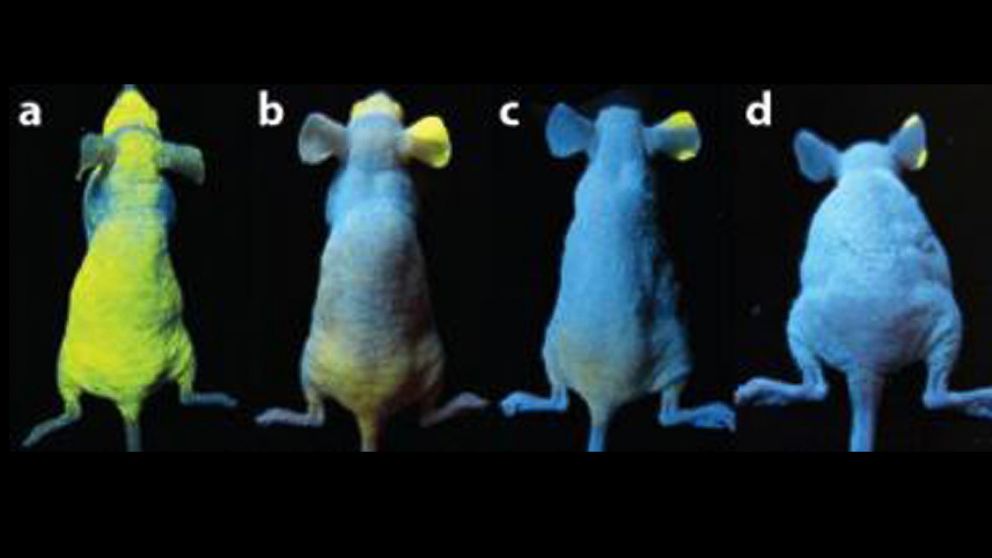Dark tales around the fire (3): Man made species, the goat and the spider
Before talking about which species meet a criterion, that criterion must be clearly defined. How do you define the expression “man-made”applied to the development of animal species? Could a cloned animal, one that comes from a long line of animals selected to have a known and very specific genetic load, such as laboratory mice, be classified as artificial?
So here I choose some interesting criteria, we can have very special moments telling about these animals when we are on a camp chat:
- Animals transformed by genetic manipulation
Of these we do have, and many in fact. They can be considered artifitial because the laboratory is essential in the genesis of their line (which is often called a variety, because it is still claimed to belong to the same species of their parents’).
Goats that have silk proteins in their milk:

This sounds so powerful, goats with silk milk ... well it is more about having a living silk protein spout in the shape of a goat.
Spider silk is much more resistant than butterfly silk, and its potential applications are extraordinary but incredibly expensive to produce. At the University of Wyoming, sceintists manipulated the genetic code of some goats to introduce the genes that encode these proteins. And in order to have access to them, they made a fine manipulation, so that these genes are expressed in the goats' milk, which therefore contains those juicy and appetizing proteins[1]. Unfortunately, it is still a very expensive way to get spider silk.
There are many other animals that carry genes from completely different species in their genome. For example:
These genetically engineered mice have genes from a bioluminescent jellyfish. They are used in cancer and cognitive impairment research.[2]

- Hybrids and chimeras achieved through lab techniques
The dromedary and the llama do not share the same geographical environment. The hybrid of both was achieved thanks to a research center in Dubai (where they are very fond of dromedary races and… well…. money can pay some sort of strange experiments[3]

Other very interesting example is the geep, a chimera produced by combining the embryos of a goat and a sheep, as far as these two species (goats and sheeps) can´t get offsprings together by their own natural means (some sheperds say they vigorously try). The calf seems really cute.
As I said, they goats and sheeps sometimes try to do things on their own, but they are not particularly successful:

In general, these animals either do not have descendants of their own species, like the the last two examples, because they are hybrids, or they are not recognized as a new species like the goats that excrete silk proteins or the bioluminescent mice.
But we are very close to having a totally artifitial species, in fact the proposed name is Drosophila synthetica.
Were you expecting to have something about invertebrates in this post? you got it.
![[DROSOPHILA%2520SYNTHETICA%255B3%255D.jpg]](https://blogger.googleusercontent.com/img/b/R29vZ2xl/AVvXsEidySqO0-700op9-KcuvCls9UkAN47D2idX3bQs2R1Xii4k1z2D3omcor1N1A5IpfJ-jF_vGTBnCRa1H_Ge4Xqdvf9ryyoA-a6Sbaktulf6LAneS6G7ZhvsgNm9miHdDJTkgmMXS_U_xLGH/s1600/DROSOPHILA%252520SYNTHETICA%25255B3%25255D.jpg)
Using preexisting transgenes and recessive mutations of Drosophila melanogaster, a transgenic population arises with small eyes and a different venation pattern that fulfils the criteria of a new species according to Mayr’s Biological Species Concept. The population described here is the first transgenic organism that cannot hybridize with the original wild type population but remains fertile when crossed with other identical transgenic animals.[4]
For this “species” of animals it is also proposed the term “synthetic species” to distinguish it from “natural species”, not only because it has been created by genetic manipulation, but also because it may never be able to survive outside the laboratory environment.
I would give the honor to Drosophila synthetica, wouldn’t you?
I haven’t told anything about synthetic genes so far because there is not any scientific paper about animals carrying those genes (only some types of bacterias and yeast). It would be very interesting to discove some attempt to do it.
And well, finally, we can extend the term animals to animal shaped robots, we have some interesting examples:

https://www.youtube.com/watch?v=...
Footnotes
[1] Scientists breed goats that produce spider silk
[2] Biotech's Glowing Breakthrough
Comentarios
Publicar un comentario